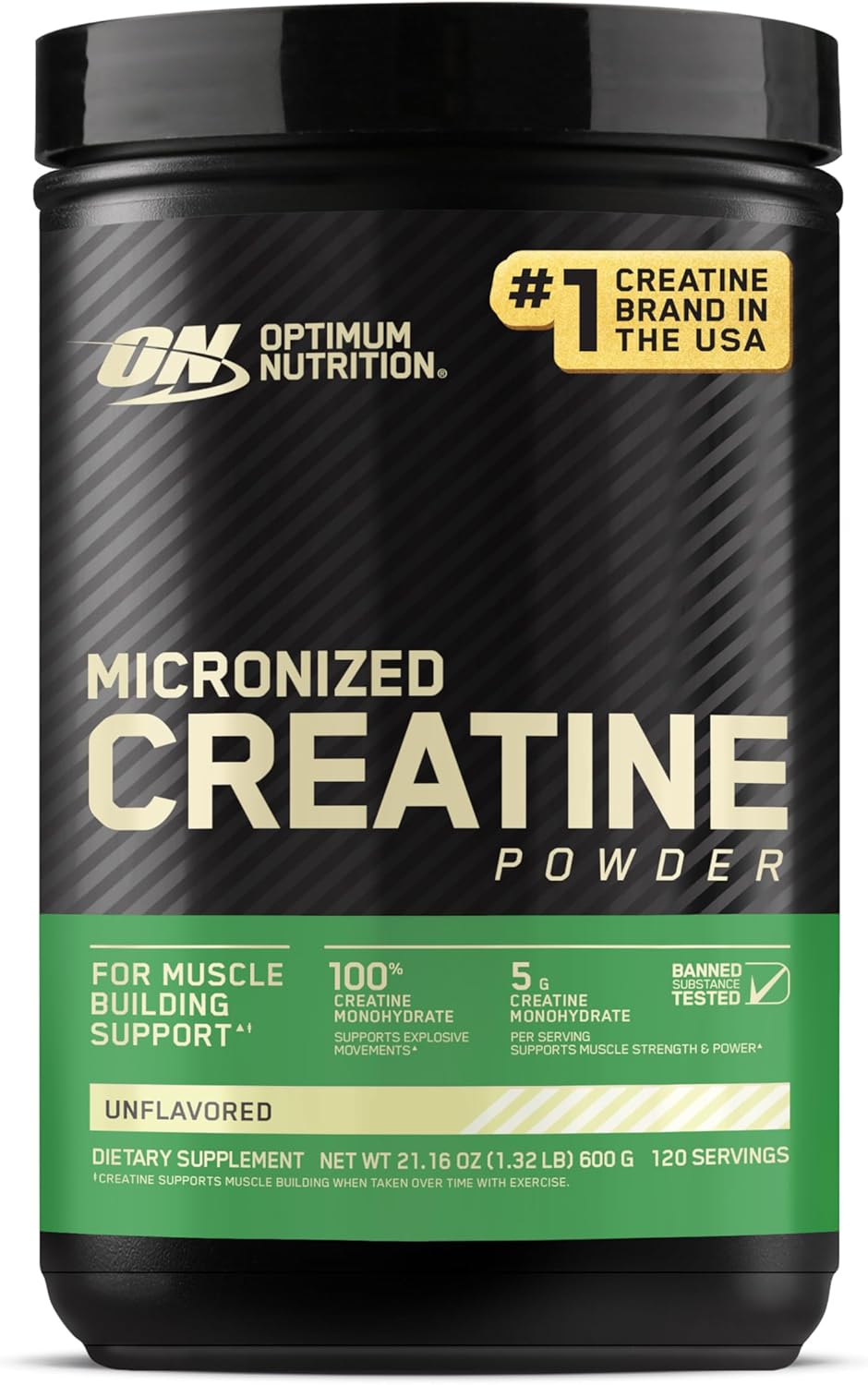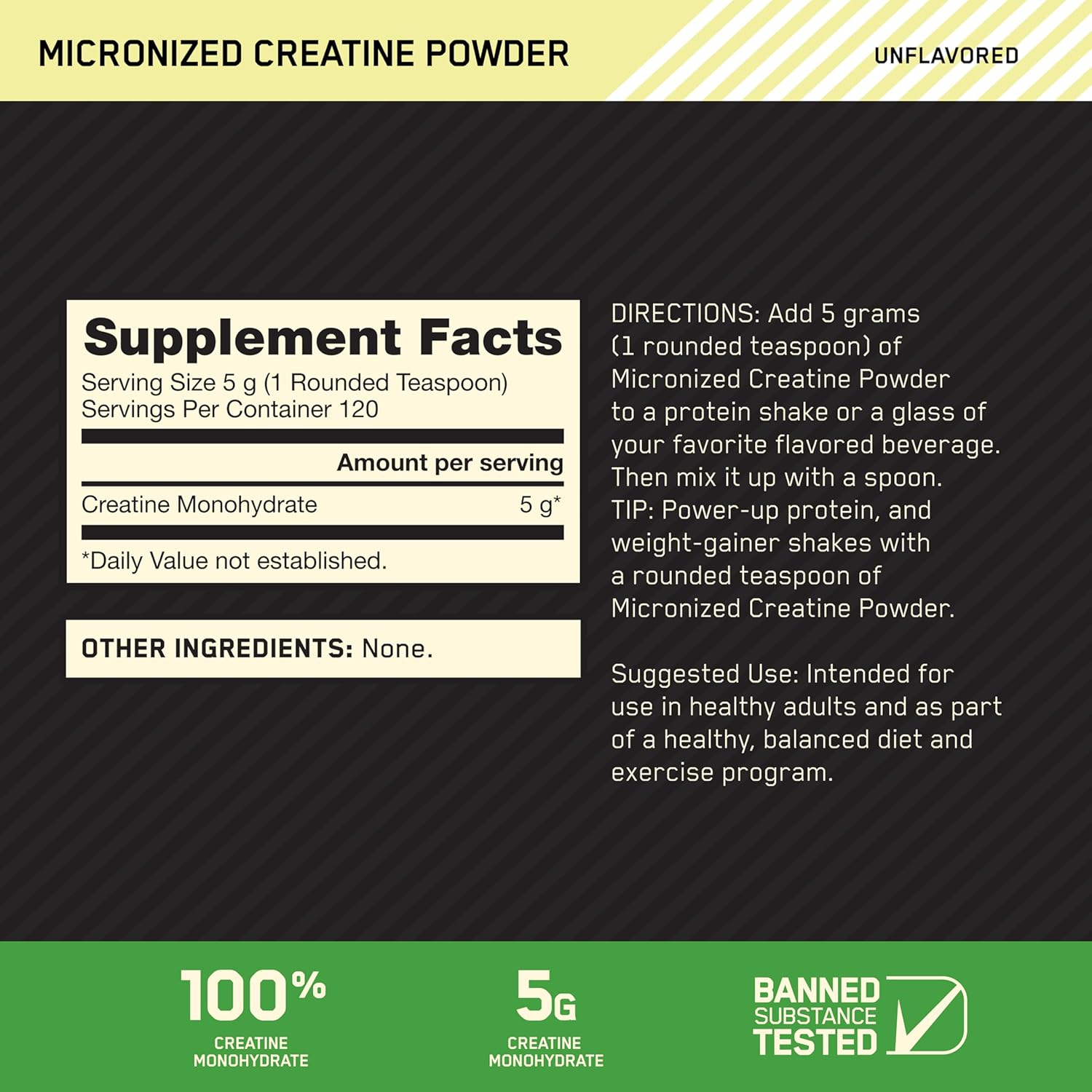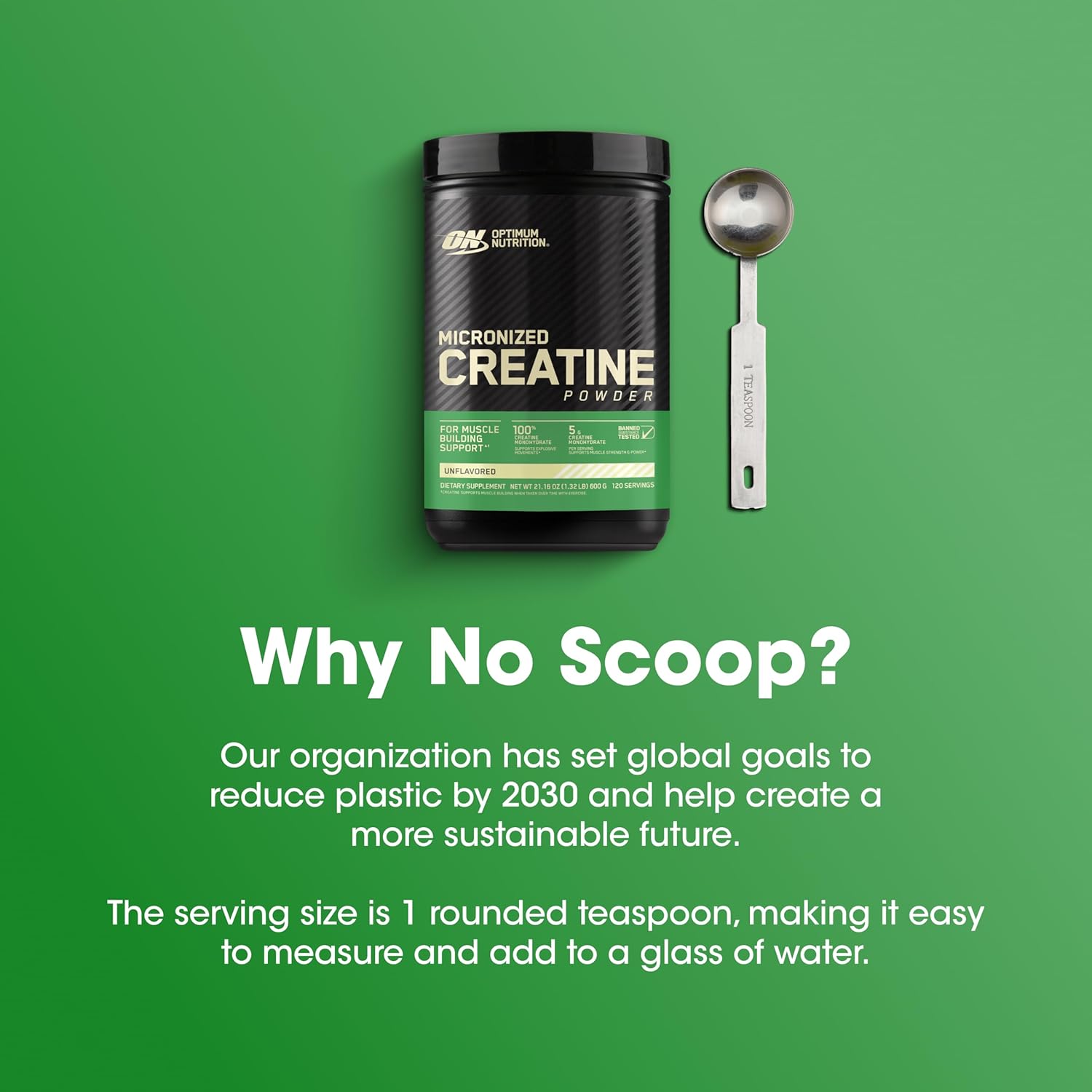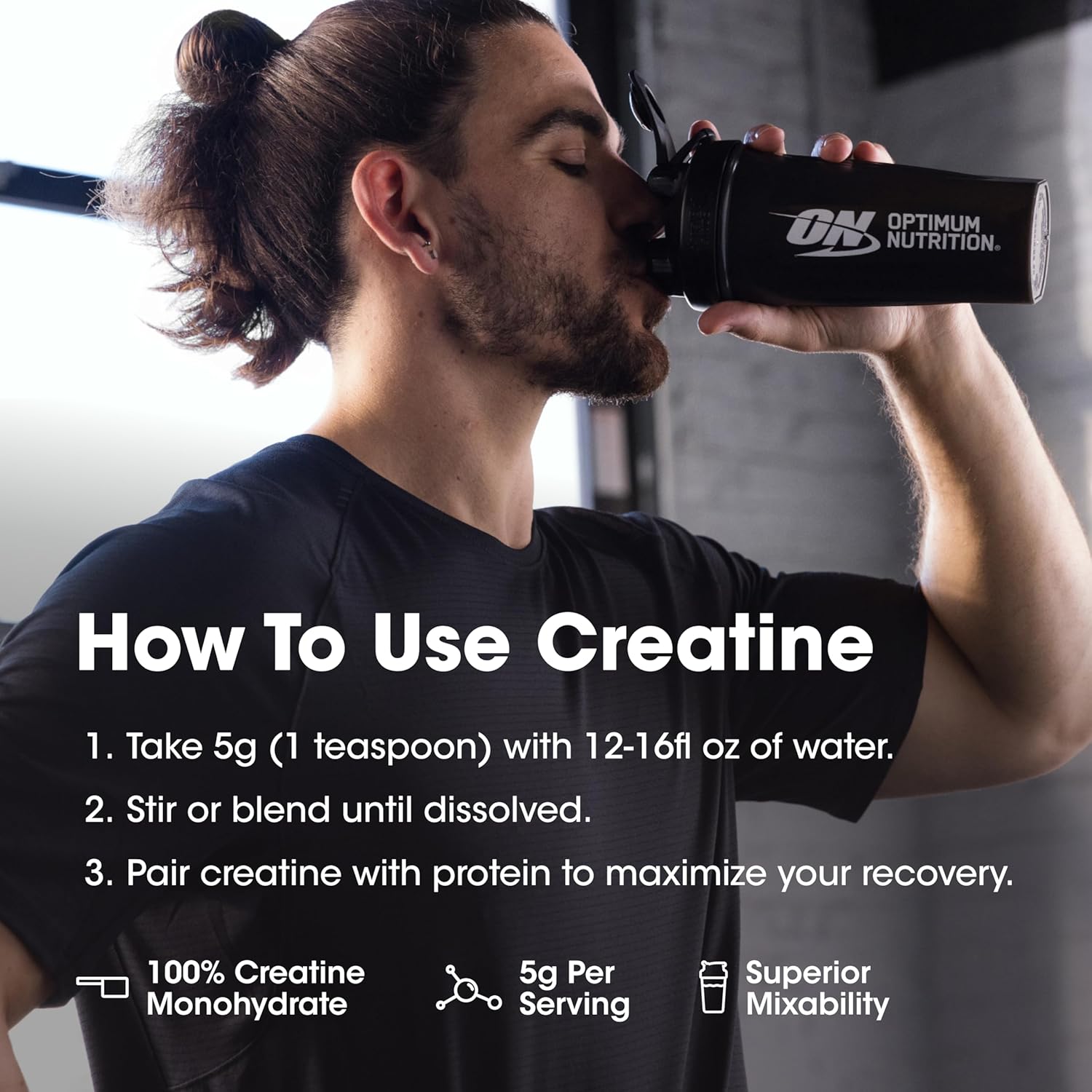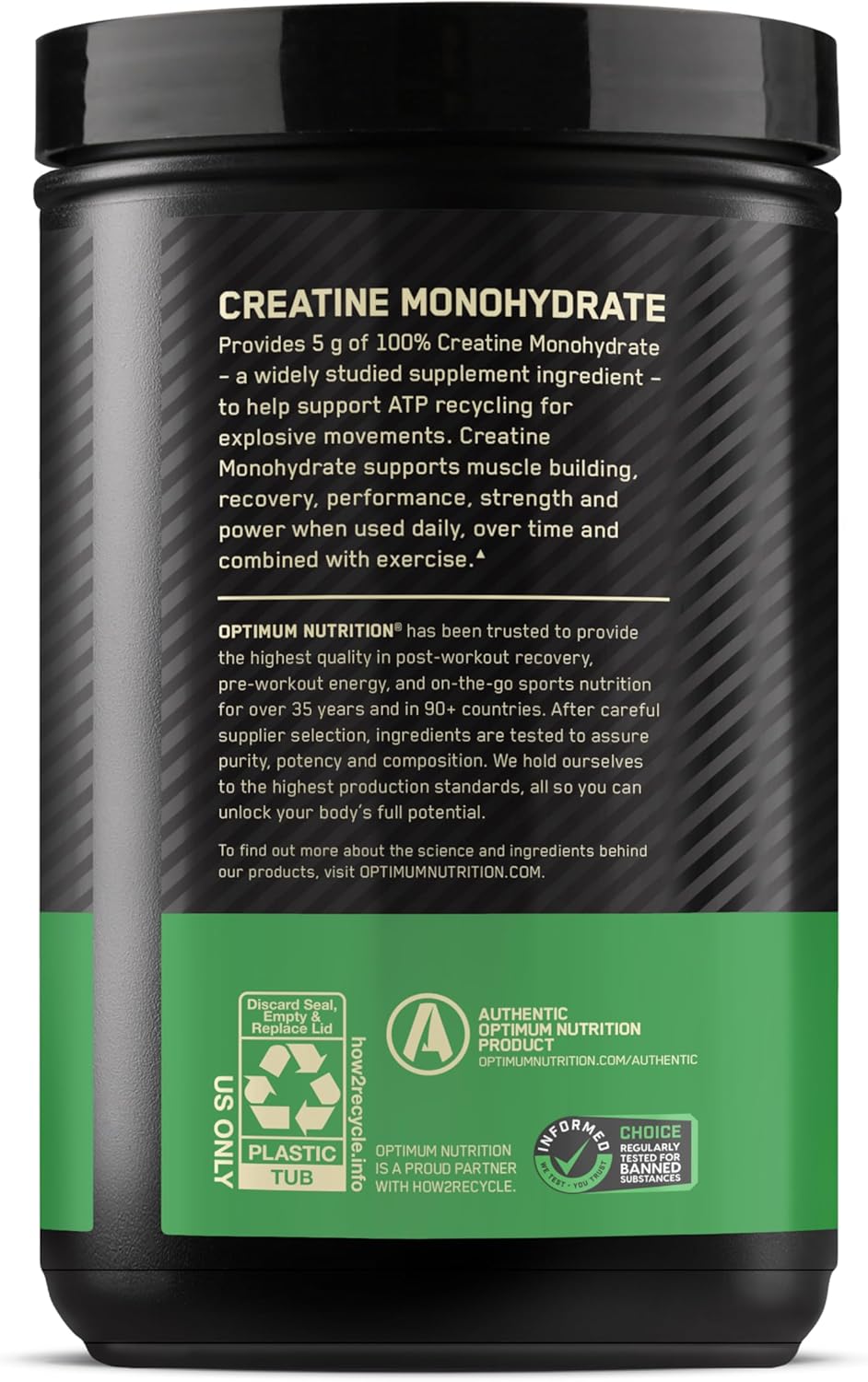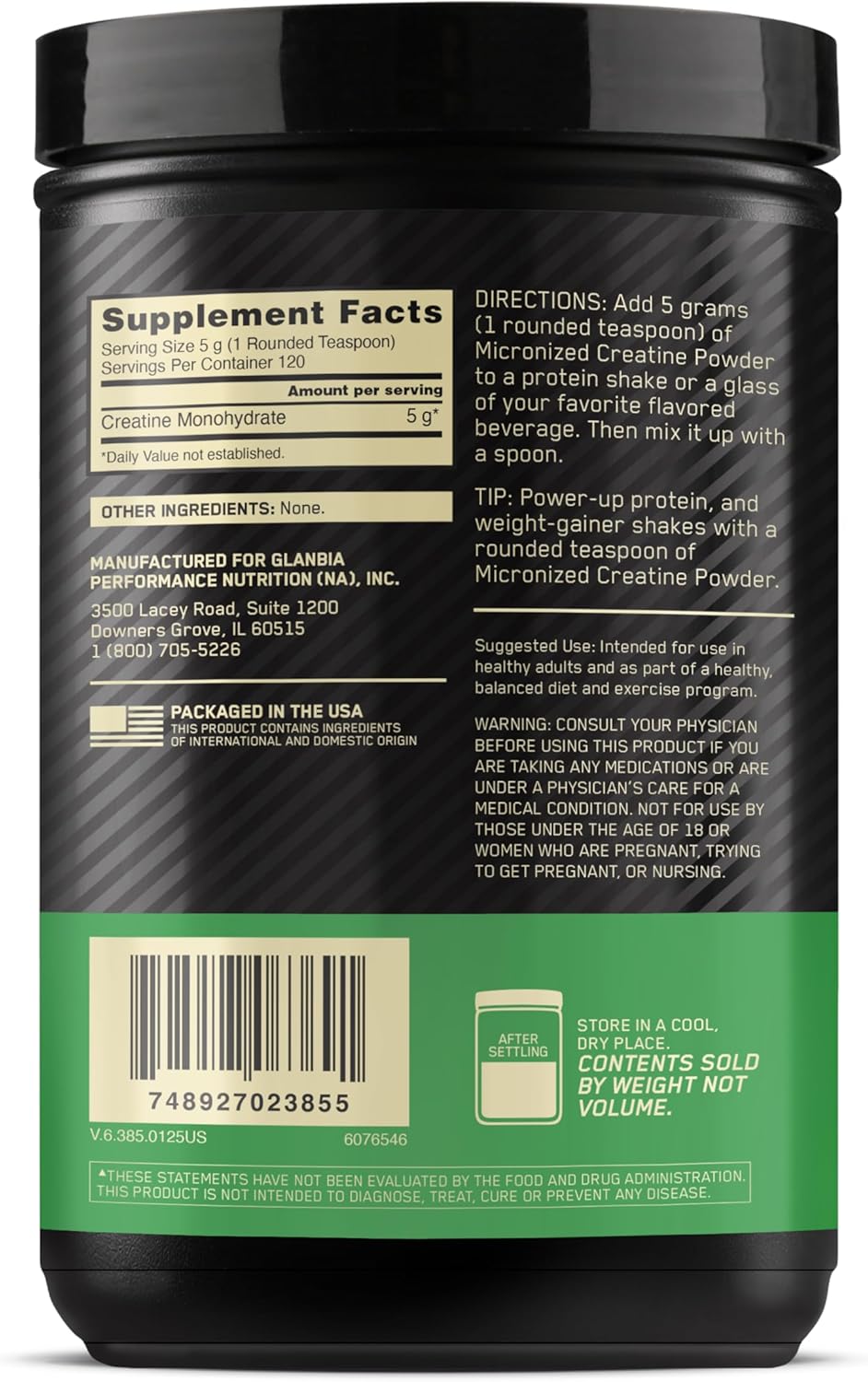
Optimum Nutrition Micronized Creatine Review powder Buying Guide – Oemiu
Optimum Nutrition Micronized Creatine Powder: A Comprehensive Review and Buying Guide
The world of fitness supplements can often feel like a confusing landscape of promises and scientific jargon. Sifting through the marketing hype to find products that genuinely deliver on their claims requires careful research and a discerning eye. For those seeking to enhance their athletic performance, increase strength, and improve muscle mass, creatine monohydrate has consistently emerged as one of the most well-researched and effective supplements available. Among the myriad creatine products on the market, Optimum Nutrition (ON) Micronized Creatine Powder stands out as a popular choice. But does it live up to the hype? This comprehensive guide dives deep into the product, examining its benefits, potential drawbacks, and everything you need to know before making a purchase. We will examine all aspects of this popular “creatine powder micronized formula,” and discuss how it can impact your training regimen and overall fitness goals.
Understanding Creatine and Its Benefits
Creatine is a naturally occurring compound found in muscle cells. It plays a crucial role in energy production, particularly during high-intensity activities like weightlifting or sprinting. When you supplement with creatine, you increase the amount of phosphocreatine stored in your muscles. Phosphocreatine helps regenerate adenosine triphosphate (ATP), the primary energy currency of cells. This enhanced ATP availability translates to several potential benefits for athletes and fitness enthusiasts.
One of the most well-documented benefits of creatine supplementation is increased strength and power output. Studies have consistently shown that creatine can improve performance in exercises like bench press, squats, and sprints. This makes it a valuable tool for anyone looking to push their limits in the gym or on the field. Beyond just strength gains, creatine also promotes muscle growth. It does this through several mechanisms, including increasing protein synthesis (the process of building new muscle tissue), reducing muscle breakdown, and increasing cell volumization (drawing water into muscle cells, which can signal growth).
Furthermore, creatine can also enhance muscle recovery after intense workouts. By reducing muscle damage and inflammation, creatine allows you to bounce back quicker and train more frequently. This is particularly beneficial for athletes who are training hard and need to minimize downtime. The benefits of creatine extend beyond just physical performance. Some research suggests that creatine may also have cognitive benefits, such as improved memory and focus. While more research is needed in this area, the early findings are promising. It’s important to note that individual responses to creatine can vary. Some people may experience significant benefits, while others may see less noticeable effects. Factors like genetics, diet, and training intensity can all influence how your body responds to creatine supplementation.
Before starting any supplement regimen, it’s essential to consult with a healthcare professional, especially if you have any underlying health conditions. Understanding the basics of creatine supplementation and its potential benefits is the first step in determining whether Optimum Nutrition Micronized Creatine Powder is the right choice for you. The accessibility of “creatine powder for muscle building” allows people of different fitness levels to incorporate it into their diets.
Optimum Nutrition Micronized Creatine: A Closer Look
Optimum Nutrition (ON) is a well-respected and established brand in the sports nutrition industry. They are known for producing high-quality supplements that are backed by science and trusted by athletes worldwide. Their Micronized Creatine Powder is one of their most popular products, and for good reason. The term “micronized” refers to the particle size of the creatine. Micronization is a process that reduces the size of the creatine molecules, making them easier to dissolve in water and potentially improving absorption in the body.
This particular formulation of “micronized creatine supplement” is claimed to offer several advantages over traditional creatine monohydrate powders. Improved solubility is a key selling point. Creatine monohydrate can sometimes be gritty and difficult to mix, leaving sediment at the bottom of your shaker cup. Micronized creatine, on the other hand, dissolves much more easily, resulting in a smoother and more palatable drink. This can be especially important for those who find it difficult to consume large amounts of gritty creatine powder. The increased absorption rate is another claimed benefit. While the research on this is somewhat mixed, some studies suggest that micronized creatine may be absorbed more quickly and efficiently by the body compared to traditional creatine monohydrate. This could potentially lead to faster results and less gastrointestinal distress.
Optimum Nutrition Micronized Creatine Powder is also known for its purity. ON claims to use only the highest quality creatine monohydrate in their product, ensuring that you are getting a pure and effective supplement. This is important because some creatine powders may contain impurities or fillers that can reduce their effectiveness or even be harmful. Each serving of ON Micronized Creatine Powder typically provides 5 grams of creatine monohydrate, which is the recommended daily dosage for most people. The powder is unflavored, making it easy to mix with your favorite beverages or protein shakes.
It is important to note that while micronization may offer some advantages, traditional creatine monohydrate is still a highly effective and affordable option. Ultimately, the best choice for you will depend on your individual preferences and budget. Consumers trust brands like Optimum Nutrition, as they are a familiar and trusted source of “premium creatine monohydrate powder.”
Comparing Optimum Nutrition Micronized Creatine to Other Creatine Products
The market is flooded with various creatine products, each claiming to be the best. Understanding the differences can help you make an informed decision. Here’s a brief comparison:
| Product Type | Description | Pros | Cons |
|---|---|---|---|
| Creatine Monohydrate | The most widely researched and affordable form of creatine. | Effective, affordable, readily available. | Can be gritty, may cause some water retention. |
| Micronized Creatine | Creatine monohydrate with smaller particle size for better solubility. | Better solubility, potentially faster absorption, may cause less GI distress. | Slightly more expensive than regular monohydrate. |
| Creatine Ethyl Ester (CEE) | Creatine with an ester attached, claimed to enhance absorption. | Some claim better absorption, but research is mixed. | May break down in the digestive system, less effective than monohydrate, can be more expensive. |
| Creatine Hydrochloride (HCL) | Creatine bound to hydrochloride, claimed to be more soluble and require smaller doses. | Highly soluble, smaller doses may be required. | More expensive than monohydrate, research is still limited. |
| Buffered Creatine (Kre-Alkalyn) | Creatine with a higher pH, claimed to be more stable in the stomach. | May be more stable in the stomach, potentially reducing conversion to creatinine. | More expensive than monohydrate, research is inconclusive. |
Optimum Nutrition Micronized Creatine falls into the “Micronized Creatine” category. While Creatine HCL might boast superior solubility and reduced bloating for some users, micronized creatine balances effectiveness with affordability. Other brands like MuscleTech and BSN also offer micronized creatine products. It is important to compare the price per serving and read customer reviews to assess the overall value and effectiveness of each product.
How to Use Optimum Nutrition Micronized Creatine
Proper usage is critical to maximizing the benefits of creatine and minimizing potential side effects. The most common and well-researched method of creatine supplementation involves two phases: a loading phase and a maintenance phase. During the loading phase, you take a higher dose of creatine (typically 20 grams per day, divided into four servings) for 5-7 days. This rapidly saturates your muscles with creatine, leading to faster results. After the loading phase, you switch to a maintenance dose of 3-5 grams per day. This helps maintain the elevated creatine levels in your muscles.
Another popular approach is to skip the loading phase and simply take the maintenance dose of 3-5 grams per day from the beginning. This method may take longer to saturate your muscles, but it can be just as effective in the long run and may reduce the risk of gastrointestinal distress.
Regardless of which method you choose, it’s important to take creatine consistently. Missing doses can lead to a decrease in creatine levels in your muscles, reducing its effectiveness. The best time to take creatine is often debated, but research suggests that taking it around your workouts may be beneficial. This could be before, during, or after your training session. Some people prefer to take it with a carbohydrate source, such as a fruit juice or a sports drink, as this may help improve creatine absorption.
Mixing Optimum Nutrition Micronized Creatine Powder is easy. Since it’s micronized, it dissolves readily in water, juice, or your favorite protein shake. Simply add the recommended dose to your beverage of choice and stir until dissolved. Be sure to drink plenty of water throughout the day when taking creatine, as it can draw water into your muscles, potentially leading to dehydration if you don’t stay hydrated.
It’s important to listen to your body and adjust your dosage as needed. If you experience any side effects, such as stomach upset or bloating, try reducing your dose or dividing it into smaller servings throughout the day. Finally, remember that creatine is just one piece of the puzzle. To see the best results, you need to combine it with a healthy diet, a consistent training program, and adequate rest.
Potential Side Effects and Safety Considerations
Creatine is generally considered safe for most people when taken as directed. However, like any supplement, it can cause side effects in some individuals. The most commonly reported side effect of creatine is water retention. Creatine draws water into muscle cells, which can lead to a temporary increase in body weight. This water retention is generally harmless, but it can be bothersome for some people, especially those who are concerned about their appearance.
Some people may experience gastrointestinal distress, such as stomach upset, bloating, diarrhea, or nausea, when taking creatine. This is more common during the loading phase or when taking high doses of creatine. To minimize these side effects, try reducing your dose, dividing it into smaller servings, or taking it with food.
There have been some concerns raised about the potential effects of creatine on kidney function. However, studies have consistently shown that creatine is safe for people with healthy kidneys. If you have any pre-existing kidney conditions, it’s important to consult with a healthcare professional before taking creatine. Although rare, muscle cramps have been reported by some creatine users. Ensuring proper hydration, electrolyte balance and adequate stretching can usually mitigate this issue.
Creatine may interact with certain medications, such as diuretics and nonsteroidal anti-inflammatory drugs (NSAIDs). If you are taking any medications, it’s important to talk to your doctor before starting creatine supplementation. It is also advised to avoid creatine if you are pregnant or breastfeeding, as the safety of creatine in these populations has not been established. Always purchase creatine from reputable brands like Optimum Nutrition to ensure you’re getting a pure and safe product. Look for products that have been third-party tested for purity and potency. It’s wise to listen to your body and adjust your dosage accordingly. If you experience any adverse effects, discontinue use and consult with a healthcare professional. Remember, while “cheap creatine monohydrate powder” might be tempting, prioritize safety and quality.
Real-World Results and User Reviews
While scientific studies provide valuable evidence about the effectiveness of creatine, real-world experiences from users can offer further insights. A quick search online reveals a plethora of reviews for Optimum Nutrition Micronized Creatine Powder, painting a diverse picture of its effects. Many users report significant improvements in strength and power output. They find that they can lift heavier weights, perform more reps, and push themselves harder during workouts. Some users have also noticed an increase in muscle mass, particularly when combined with a consistent training program and a healthy diet.
The improved solubility of the micronized formula is frequently praised. Users appreciate that it mixes easily in water or other beverages, without leaving a gritty residue. This makes it more convenient to consume and reduces the likelihood of stomach upset. Some users have reported experiencing water retention, which can lead to a temporary increase in body weight. While this is generally considered harmless, it can be a concern for some individuals. A few users have reported experiencing mild gastrointestinal distress, such as stomach upset or bloating. This is more common during the loading phase or when taking high doses of creatine.
It’s important to remember that individual results can vary. Some people may experience significant benefits from creatine supplementation, while others may see less noticeable effects. Factors like genetics, diet, and training intensity can all influence how your body responds to creatine. Before and after photos showcasing increased muscle mass and improved body composition are common on fitness forums and social media. However, it’s crucial to approach these visuals with a critical eye, as they may not always be representative of typical results.
Ultimately, the best way to determine if Optimum Nutrition Micronized Creatine Powder is right for you is to try it for yourself. Start with a low dose and gradually increase it as tolerated. Be sure to track your progress and pay attention to how your body responds. Reading through user reviews can provide valuable insights, but remember that everyone’s experience is unique. Consider both the positive and negative feedback when making your decision.
Frequently Asked Questions (FAQ)
Is creatine safe for everyone?
Creatine is generally considered safe for most healthy adults when taken as directed. However, certain individuals should exercise caution or avoid creatine supplementation altogether. People with pre-existing kidney conditions should consult with a healthcare professional before taking creatine, as it may potentially exacerbate their condition. While studies have shown creatine to be safe for those with healthy kidneys, it’s always best to err on the side of caution. Pregnant or breastfeeding women should also avoid creatine, as the safety of creatine in these populations has not been established. Additionally, individuals taking certain medications, such as diuretics or NSAIDs, should consult with their doctor before taking creatine, as it may interact with these medications. If you have any concerns about your health or are taking any medications, it’s always best to talk to your doctor before starting creatine supplementation. They can help you determine if creatine is safe for you and recommend the appropriate dosage.
How much creatine should I take?
The recommended dosage of creatine varies depending on whether you are following a loading phase or a maintenance phase. If you are following a loading phase, the typical dosage is 20 grams per day, divided into four servings, for 5-7 days. This rapidly saturates your muscles with creatine. After the loading phase, you switch to a maintenance dose of 3-5 grams per day. If you are skipping the loading phase, you can simply start with the maintenance dose of 3-5 grams per day from the beginning. It’s important to take creatine consistently, even on non-training days, to maintain elevated creatine levels in your muscles. Some people may benefit from taking a higher dose of creatine, while others may only need a lower dose. Factors like body weight, muscle mass, and training intensity can all influence your creatine needs. It’s always best to start with the recommended dosage and adjust as needed, based on your individual response.
Will creatine make me gain weight?
Yes, creatine can cause a temporary increase in body weight, primarily due to water retention. Creatine draws water into muscle cells, which can lead to a slight increase in overall body weight. This water retention is generally harmless and does not represent true fat gain. The amount of weight gain varies from person to person, but it is typically in the range of 1-3 kilograms (2-6 pounds). Some people may not experience any weight gain at all, while others may gain more. The weight gain associated with creatine is primarily due to increased water content within the muscles, making them appear fuller and more defined. This can be a positive effect for those looking to increase muscle size and strength. If you are concerned about weight gain, you can try starting with a lower dose of creatine and gradually increasing it as tolerated.
What are the long-term effects of creatine supplementation?
Numerous studies have investigated the long-term effects of creatine supplementation, and the overwhelming consensus is that it is safe for most healthy adults when taken as directed. Studies lasting several years have not found any significant adverse effects associated with long-term creatine use. However, it’s important to note that long-term research is ongoing, and more studies are needed to fully understand the potential long-term effects. Some people may experience mild side effects, such as stomach upset or bloating, even with long-term use. It’s important to listen to your body and adjust your dosage accordingly.
Can women take creatine?
Yes, women can safely take creatine and experience the same benefits as men, including increased strength, power, and muscle mass. Contrary to some misconceptions, creatine does not cause women to become bulky or develop masculine features. Women tend to have lower creatine stores in their muscles compared to men, so they may actually benefit more from creatine supplementation. The recommended dosage of creatine is the same for women as it is for men, typically 3-5 grams per day.
Is it necessary to cycle creatine?
There is no scientific evidence to support the need to cycle creatine. Cycling refers to the practice of taking creatine for a period of time followed by a period of time off. This practice was originally based on the belief that the body would eventually become desensitized to creatine, rendering it ineffective. However, studies have shown that creatine remains effective even with long-term continuous use. Some people may choose to cycle creatine simply for personal preference or to reduce the risk of potential side effects. However, it is not necessary for most people.
Can I take creatine with other supplements?
Creatine can generally be taken safely with most other supplements, but there are a few potential interactions to be aware of. Combining creatine with caffeine may reduce the effectiveness of creatine, although more research is needed in this area. Some people may experience increased anxiety or jitters when taking creatine and caffeine together. Creatine can also be combined with protein powder, branched-chain amino acids (BCAAs), and other common fitness supplements. However, it’s always a good idea to check with a healthcare professional or registered dietitian before combining creatine with any other supplements, especially if you have any underlying health conditions or are taking any medications.
